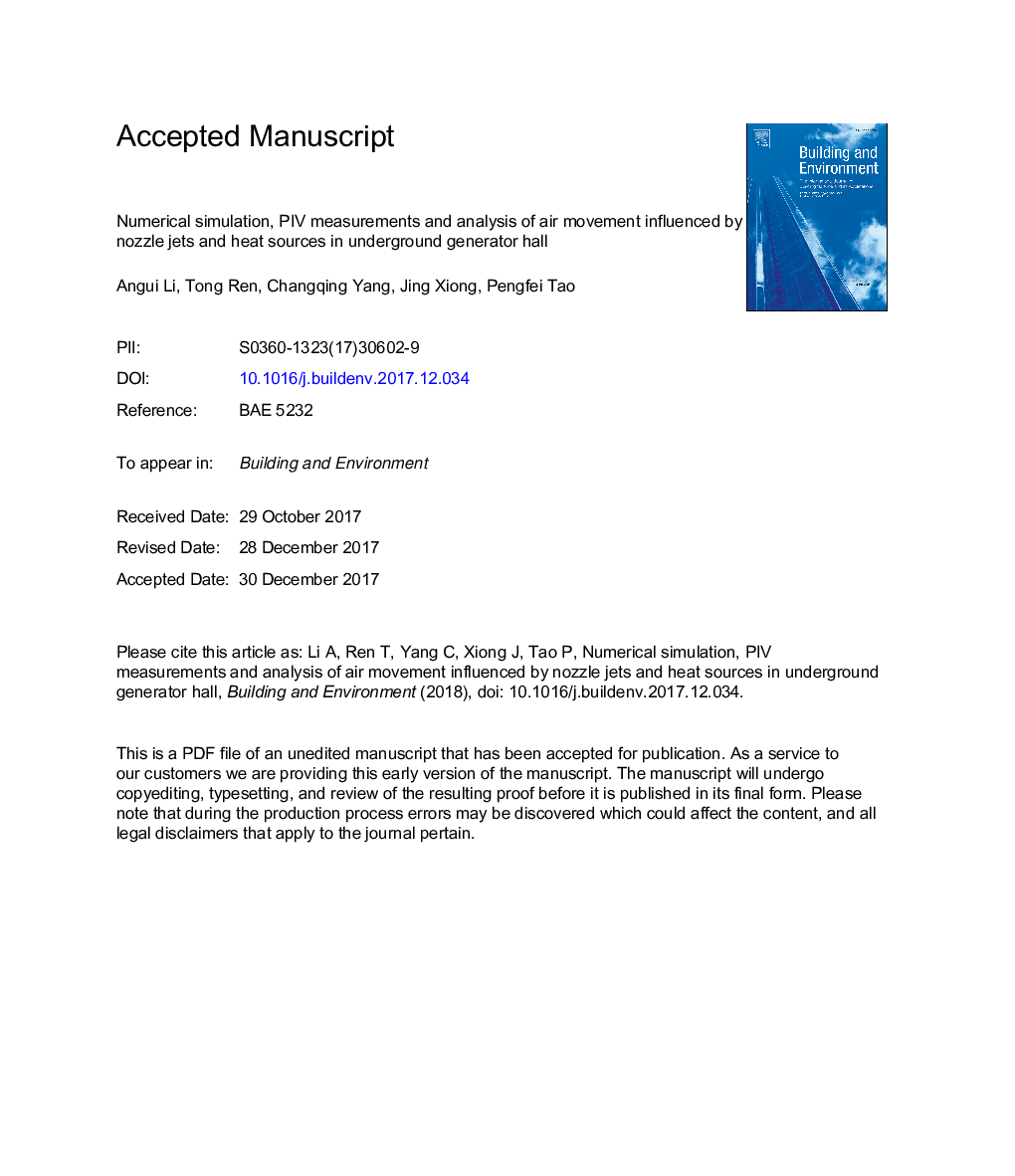| Article ID | Journal | Published Year | Pages | File Type |
|---|---|---|---|---|
| 6697994 | Building and Environment | 2018 | 37 Pages |
Abstract
A research project was undertaken, using Computational Fluid Dynamic (CFD) numerical simulations and Particle Image Velocimetry (PIV) experimental techniques, to investigate air movement influenced by nozzle jets and heat sources in large generator hall of underground hydropower station. The interaction between supply nozzle air jet (inertia force) and thermal plume from heat source (thermal buoyancy) was studied under the design heat source and five different nozzle jet modes: Case1â¯=â¯V/V0â¯=â¯0.5, Case2â¯=â¯V/V0â¯=â¯0.75, Case3â¯=â¯V/V0â¯=â¯1, Case4â¯=â¯V/V0â¯=â¯1.25 and Case5â¯=â¯V/V0â¯=â¯1.5 (V is the actual velocity of the nozzle jets, V0 is the design nozzle jet velocity). The air distribution was assessed based on the evaluation indexes. The accuracy and reliability of the CFD prediction was verified by the theoretical formula and PIV experiment. The results show that the first three cases (Arâ¤0.00048) could meet the requirements of industry standards. After comparing with Case1 and Case2, Case3's velocity uniformity coefficient can be reduced by 24.96% and 13.63%; temperature uniformity coefficient can be decreased by 5.10% and 3.77%; energy efficiency coefficient can be raised by 22.61% and 6.83%; the average value of Air Diffusion Performance Index can be raised by 34.51% and 3.98% respectively. It is found that a larger jets velocity does not always ensure better replacement of the indoor air, and vice versa.
Keywords
Related Topics
Physical Sciences and Engineering
Energy
Renewable Energy, Sustainability and the Environment
Authors
Angui Li, Tong Ren, Changqing Yang, Jing Xiong, Pengfei Tao,
